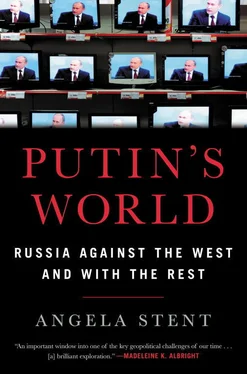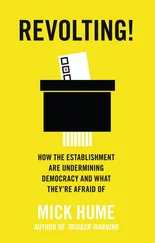It was only after World War Two and the wave of decolonization that the USSR began to focus on opportunities in the Middle East. Prior to 1948, its influence in the region had been minimal. The 1948 war that established the state of Israel was the first major opportunity for Moscow to become a player. Despite a long history of Russian and Soviet anti-Semitism and an official opposition to Zionism, the Kremlin viewed the Jewish struggle against the British Empire favorably. From Moscow’s viewpoint, a Jewish state in the midst of the Arab world would provide a constant source of conflict between the West and the Arabs, and would offer the USSR opportunities in an area from which it had been excluded. 5So, with Soviet assent, Czechoslovakia supplied the Jewish underground with arms in their struggle against the British Mandate for Palestine. Indeed, the Soviet Union was the first country to recognize Israel de jure (the United States was the first country to recognize Israel de facto; de jure recognition came in 1949).
The Soviet friendship with Israel was, however, short-lived. Soon domestic factors intervened to derail the relationship. In 1948, Golda Meir, Israel’s first envoy to the USSR, who was born in Kyiv, came to Moscow and received a tumultuous demonstration of affection during her visit to the Choral Synagogue. This was abhorrent to the Kremlin. Stalin was deeply suspicious about the true loyalties of the USSR’s Jewish citizens (calling them “rootless cosmopolitans”) and equated their attachment to a foreign country with treason. In the last year of his life he accused a group of Jewish doctors of murdering several prominent Soviet officials and of intending to poison him. The doctors were slated for execution. He was planning a mass deportation of Jews just before a fatal stroke felled him in March 1953. Moreover, Israel had supported the US-led UN force fighting the Korean War and, from Moscow’s point of view, was siding with the West on the international stage.
Moscow focused instead on developing ties to the newly emerging anti-colonial and anti-Western Arab countries, even though many of them persecuted communists at home. The first prize was Egypt, which remained the focus of Soviet policy until 1973. The Kremlin was initially skeptical about the officer coup in 1952 that brought Gamal Abdel Nasser to power and overthrew the monarchy. But it soon developed strong ties with Nasser, trained the Egyptian military, and supplied it with advanced weaponry. Similar ties with Iraq and Syria soon developed, as the region became a focus of US-Soviet Cold War rivalry. The USSR was now seen as the main protector of the Arabs against US-backed Israel. Hence the blow to both Moscow and its client states when Israel defeated them in the June 1967 Six-Day War. It was, according to Moscow’s man in the Middle East Yevgeny Primakov, “a turning point, not only in Egypt’s history, but for the entire world. The magnitude of the Arab defeat seriously traumatized Arabs everywhere.” 6Egypt, Syria, and Jordan all lost territory to Israel, which now controlled all of Jerusalem, the West Bank, the Sinai Peninsula, and the Golan Heights. After the war, the USSR broke off diplomatic ties with Israel, not to be restored until 1991.
The relationship with Egypt deteriorated after 1967 when Nasser’s successor, Anwar Sadat, accused the Soviets of falling behind in their promised weapons deliveries. In 1972, he abruptly expelled 21,000 Soviet military advisers. Nevertheless, in the run-up to the Yom Kippur War, the weapons deliveries increased. In October 1973, a coalition of Arab states was, once again, unable—despite the advantage of a surprise attack and success on the battlefield—to defeat Israel during the war. After it was over, Sadat began to draw closer to the United States and eventually made a historic journey to Jerusalem to normalize relations with Israel. But Moscow retained its close military, economic, and political ties to Syria, Iraq, and other Arab states. The Middle East remained one of the top priorities for Soviet foreign policy, and the USSR backed the Arab and Palestinian cause against Israel and the United States.
The USSR’s relationship with Iran was complicated. In the months right after World War Two and during what proved to be the first Cold War crisis, the USSR refused to withdraw its troops from Northern Iran, which shared a border with Soviet Azerbaijan and which it had occupied during World War Two. Under UN pressure, Moscow pulled out and eventually developed a profitable economic relationship with Iran under Shah Mohammed Reza Pahlavi, while at the same time supporting the Tudeh Communist Party. After the shah’s 1979 overthrow and the emergence of the Islamic Republic of Iran, ties became strained. The new clerical government of Ayatollah Rullohah Khomeini denounced the communist Soviet Union as a “little Satan,” as opposed to the “great Satan,” which was the United States. Moreover, the Soviet invasion of Afghanistan galvanized Islamic anti-Soviet sentiments. After the Soviet withdrawal from Afghanistan in 1989, ties with Tehran began to improve, with the focus on arms sales.
It was only when Gorbachev came to power that the USSR’s zero-sum approach to the Middle East began to change. As part of his New Political Thinking, he sought cooperation with the United States on a number of issues, including the Middle East. Despite Primakov’s efforts to avoid a conflict with Iraq after it invaded Kuwait (he personally made three trips to Baghdad to try to persuade Iraqi leader Saddam Hussein to withdraw from Kuwait), Gorbachev and his foreign minister Eduard Shevardnadze eventually supported the US-led coalition in the 1991 First Gulf War to liberate Kuwait. This was a major turning point. Moscow had abandoned a client state into which it had poured billions of dollars in military and other assistance. Gorbachev also realized that in order to join the United States in seeking to achieve an Arab-Israeli peace agreement, the USSR would have to restore ties to Israel. This it did in 1991. Indeed, one of the final foreign policy acts of the USSR was the October 1991 Madrid Conference on the Middle East, which sought to broker an Arab-Israeli deal. Sponsored by the US, USSR, and Spain, it represented the first time Moscow and Washington had jointly organized a Middle East peace conference. Shortly after the meeting, the USSR collapsed, and with it came a diminution of Russian influence in the region.
During the 1990s, Russia had neither the resources nor the commitment to cultivate its relations with the Middle East. While economic ties and arms sales continued, the Yeltsin administration was mainly focused on its relations with the West. It lacked any broader strategic vision of what it wanted to achieve internationally. However, while the Kremlin was preoccupied with ties with the West, a number of former and current officials were freelancing, focusing on lucrative economic opportunities in Iran and Iraq—including in the nuclear field. In 1992, much to the consternation of the United States, Russia concluded an agreement to construct a nuclear power plant in Bushehr in Iran—a deal that originally had been signed by the shah with German and French companies. Moreover, it was becoming clear that various Russian entities were involved in building up Iran’s nuclear program and that Russian institutes were training Iranian missile scientists. The US and its allies suspected that the development of a nuclear power program was a cover for what could become a nuclear weapons program. Throughout the 1990s Russia’s involvement in the Iranian nuclear program raised questions about who was in control of Russian foreign policy and about Russia’s attitude toward nonproliferation.
Russia’s policy toward Iran was also driven by domestic considerations under Yeltsin, as it is under Putin. Post-Soviet Russia has a population of twenty million Muslims, who are not immune to the influence of fundamentalism, and the Kremlin sought to ensure that no outside power—be it Iran, Saudi Arabia, or Turkey—would try to export radical Islam to the restive North Caucasus. As one Russian observer explained the drive toward Russian-Iranian cooperation, “Today a hostile Tehran could cause a great deal of unpleasantness for Russia in the North Caucasus and in Tajikistan if it were really to set its mind to supporting the Muslim insurgents with weapons, money, and volunteers.” 7
Читать дальше












